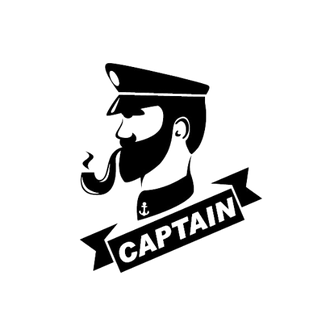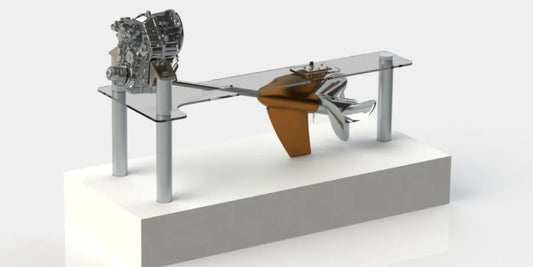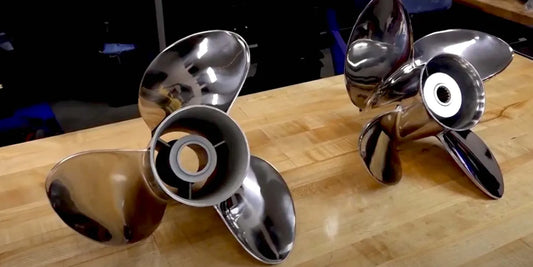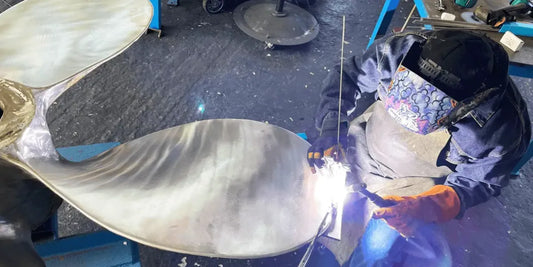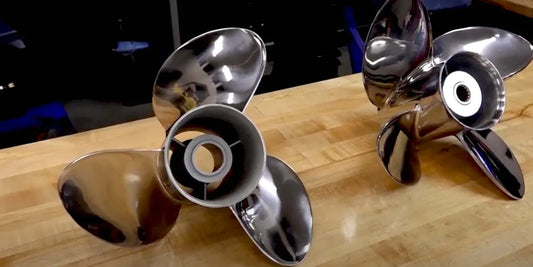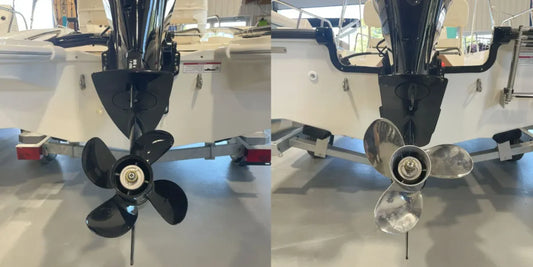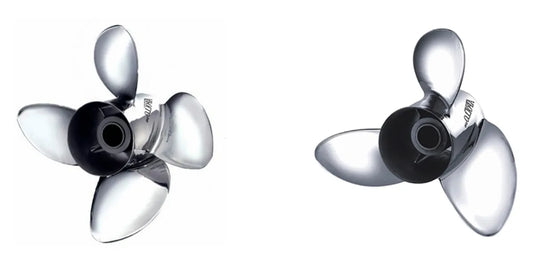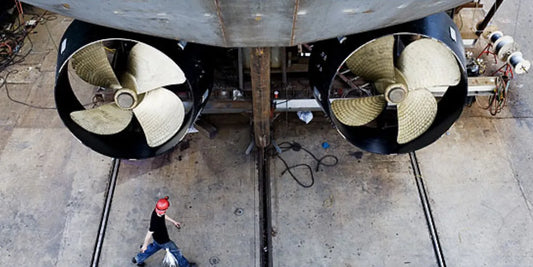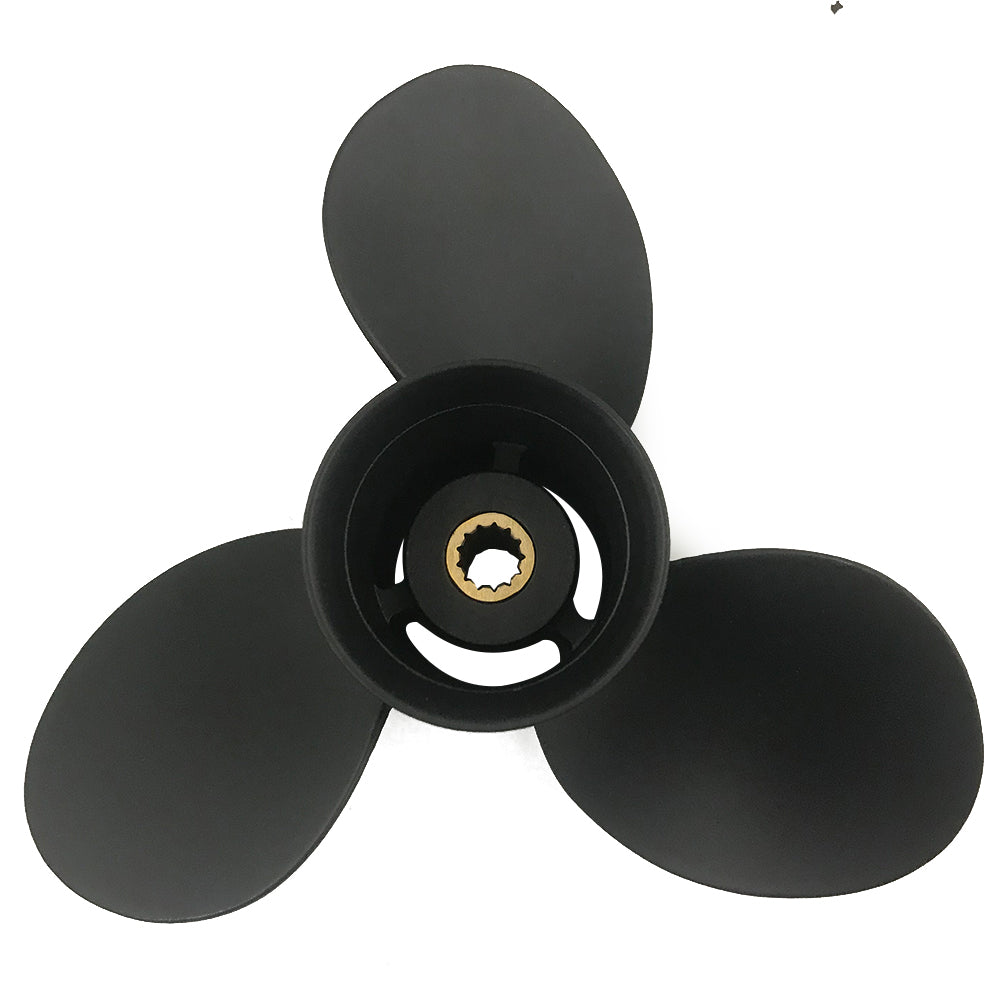Deciding on the suitable boat propeller for the outboard motor one is using is a serious choice to be made, which will significantly affect the boat's performance, bringing about two measures, efficiency and the level of enjoyment of the ship overall. For a recreational fisherman, water games fan, or even a recreational user of boats, the right propeller makes it possible to have the best possible performance in terms of speed, fuel loss, and even handling. Nevertheless, with the numerous available products on the market, it may be hard to know where to begin. You can expect this directive to inform you about some essential features you must watch out for in a propeller, and this should remain a practical choice that fits within your given requirements, and as much as possible, increase your use of the boat.
Understanding Boat Propellers

What is a Propeller?
Simply put, a propeller is a multi-blade mechanical device that rotates underwater to produce thrust, which moves the vessel forward or backward. The workings behind the propeller are based on the engine's rotation: first, the motor rotates a shaft, which then causes the propeller to rotate in water, reciprocally forcing the water backward and the boat onward or forward. The shaft-propeller arrangement is so oriented that it is directly connected to the engine; therefore, a motor is always coupled with a shaft and a propeller. Propellers are designed in every size and shape, using every available material to satisfy the requirements of a particular watercraft.
That is the regular propeller, with a hub in the middle and anywhere between two and five blades protruding from it. These blades have pitch and diameter designed so that these two measurements will determine the boat's speed, efficiency, and handling characteristics. Pitch, however, is the distance that a propeller would ideally move a boat forward in one rotation. In contrast, diameter relates to how much water the propeller can displace. Hence, larger diameter propellers would be suited for slower, heavier boats, whereas higher-pitch propellers are designed for high-speed performance craft.
Further development consists of variable pitch systems and light, strong aluminum and stainless steel materials, ensuring not only optimum propulsive forces but also the best fuel economy and less strain on the engine. In grasping the basic mechanics and types of propeller materials, one must make decisions that suit one's boating purposes: cruising, fishing, or watersports.
Types of Propellers: 3-Blade vs 4-Blade
Choosing between a 3-blade or a 4-blade propeller will depend on understanding their distinct characteristics and applications. This will help boaters get the most out of their boating experience.
3-Blade Propeller: 3-blade propellers are highly regarded for speed and efficiency. Because of the lighter design, there is less drag that would prevent the boat from reaching its highest speeds. Hence, 3-blade propellers are best suited for speed enthusiasts in recreational boating, who want to choose speed over everything else. They generally work well in open waters, requiring fast acceleration and RPM speed. The 3-blade propeller provides excellent maneuverability to help in water skiing or wakeboarding activities. That being said, it might not deliver the best grip in rougher water conditions.
4-Blade Propeller: A 4-blade propeller trades a bit of top-end speed for stability and power. With an extra blade thrown in, increased thrust is the result while operation is smoother, especially when in heavy seas or carrying a heavy load. They work well at keeping a consistent performance at lower speed levels, which is useful when trolling or cruising. Also, increased grip means better handling and less vibration, building more comfort while underway. So while there is a slight sacrifice in the peak speed of the 4-blade, it does pay back in far better handling at lower speeds.
According to Data, Testing, and industry insights, 3-blade types offer as much as 5% greater top-end speeds, while their 4-blade alternatives, providing steadier RPMs and superior thrust, allow for better fuel economy. Moreover, 4-blade propellers better prevent cavitation. It essentially boils down to the activities one intends to engage in; those who seek speed and agility should lean toward the 3-blade; otherwise, the 4-blade should be considered for its strength, efficiency, and balance under variances of a condition.
Choosing the correct propeller type, supported by proper maintenance, will ensure top performance and long service life for the kind of boating you enjoy.
Parts of a Propeller: Blades and Shaft
Blades and shafts need to combine and convert engine power into forward or reverse motion and, therefore, need to ensure propulsion with value. By design, blades, typically manufactured from optimum water-resistant materials like stainless steel or aluminum, come with pitch and rake combinations for adequate water displacement-based thrust. The shape and alignment of each blade are critical for factors like speed, fuel economy, and adaptation to various water conditions.
Instead, the shaft is a sturdy secondary that transmits rotational power from the engine to the propeller. Since the shaft is regularly exposed to water for a long time, it is made of corrosion-resistant materials. Ideally, the shaft must be well balanced and aligned with the other elements so that it does not prematurely transmit vibration and noise or wear out the bearings from friction. The shaft should also offer smooth power flow to minimize power loss by friction. Generally, the shaft and blades are the basic elements of a propeller system and occupy a daunting amount of responsibility in enhancing performance and durability for many types of marine applications.
Key Features of a Quality Propeller

Material Selection: Aluminum vs Stainless Steel
Choosing propeller material depends on weighing the advantages and disadvantages of aluminum and stainless steel in relation to performance needs and operating conditions.
Aluminum Propellers: These are the possibilities for light aluminum propellers, primarily used in recreational boating and for engines with less horsepower. They are easier to repair, as this softer material usually absorbs impacts better, thereby lessening damage to the drive system. However, aluminum will abrade with time in harsh environments and may not perform well at high speeds or under significant loads. Aluminum propellers flex more than stainless under strain, slightly affecting efficiency.
Stainless Steel Propellers: Stainless steel propellers are the highest-grade propellers, robust and durable, and deliver the best consistent performance. They are also corrosion resistant, especially in salt environments, and have a longer lifespan. The rigidity provided by stainless steel significantly reduces flex and increases power transfer precision, which allows for improved acceleration, fuel mileage, and top-end speeds. Although the price of stainless steel propellers and repairs could increase, their longevity often warrants the value investment, especially in the high-performance arena.
The boat owner can decide based on prices, boating habits, and performance expectations by comparing aluminum and stainless-steel propellers.
Blade Design and Its Impact on Performance
Blade design is the most significant factor affecting a propeller's efficiency and boating performance. Blade design, number of blades, pitch, speed, fuel economy, and handling all directly influence the effects. For instance, a propeller with fewer blades will tend to create less drag and allow for higher speed; thus, a propeller with thicker blades will produce more thrust but operate smoothly, suitable for heavy loads or towing.
Advanced designs would include cupped blades to better grip the water and minimize ventilation, promoting propeller performance in adverse environmental conditions. Similarly, progressive rake angles assist the propeller in cutting through water in high-speed ranges and offer greater acceleration and sharper turning. Modern engineering also integrates materials and fine-tuning procedures to reduce vibrations and noise.
When choosing a blade design for a propeller, it must correspond with the specific requirements of the boat and intended application. Balance-oriented design for all-around use is probably the best choice for recreational use. At the same time, more focused properties found in performance-oriented applications aim to maximize output under harsh conditions. Hence, the best blade design creates the perfect balance for power, efficiency, and reliability, raising the overall experience of boating.
Pitch and Diameter: Determine the Appropriate Measurement
Pitch and diameter guarantee sufficient force in boat performance. Pitch is defined by the distance the propeller is hypothetically supposed to move forward through a solid medium in one rotation. So, a higher pitch would mean more speed potential but less acceleration, while a lower pitch would mean more propulsion and force but less top-end speed. Diameters- the distance from the tip of one blade through the hub to the tip of the other blade- will dictate the amount of water a propeller displaces, influencing the net thrust realized and efficiency.
Knowing the pitch and diameter relationship is paramount in realizing the best performance possible for your particular vessel. For instance, a boat meant for pulling water skiers or hauling loads may want a smaller pitch plus a larger diameter for massive thrust. Conversely, a speedboat might enjoy a higher pitch combined with a slightly smaller diameter in attaining incredible speeds on open water. Often, manufacturers advertise propeller specifications like pitch and diameter purported to meet general cases of recreational cruising or competitive racing, thus enabling owners to weigh anticipated performance with specific needs for their boats.
Conversely, testing a propeller for its performance under working circumstances, considering loading capacity and water conditions, gives valuable input to refining these two parameters in many respects. Matching pitch and diameter appropriately to a boat engine would distribute speed, fuel consumption, and mechanical stress and, in return, lengthen the life of your equipment while giving much joy on the water.
Performance Considerations for Every Boat

How Speed and Acceleration Change with a Propeller
The configuration of the propeller influences both the maximum speed and acceleration of any craft. Larger blade areas will push it to accelerate faster, but due to more drag being created, slightly discourage a craft from attaining high speeds. On the contrary, blades create less resistance; hence, fewer blades are preferred for higher speed, while more blades provide smooth operation at heavy loads.
The material composition of a propeller also plays a role in factors affecting speed and acceleration. Aluminum, being relatively lightweight, favors acceleration but might not stand well in harsh conditions as opposed to stainless steel, which is noted for durability and slightly higher efficiency for attaining top speed. Rake and cup coefficients, once fine-tuned, optimize speed further. Pronounced reverse rake catapults performance on fast vessels by lift generation, whereas the edge of the cup increases edge hold in choppy water and during extreme turning. All design concepts integrated with accurate fine-tuning of pitch and diameter can be adapted to match the exact requirements for a boat's intended use and give the perfect performance balance between fast acceleration and sustained top-speed cruising.
Choosing the Right Prop for Your Boat's Engine
Choosing the most suitable propeller for your boat engine entails considering several factors. Among the most important is the engine RPM. A specific set of propellers ensures that the engine operates within its recommended operating ranges, giving the highest performance efficiency and durability. Many manufacturers offer their ranges as the ideal RPM ranges, outside of which either too high or too low would cause problems like shortening engine lives or providing insufficient thrust.
Another factor to consider is the kind of field activities you participate in. Low-pitched props enable better acceleration, or "holeshot," which is crucial to water sports such as wakeboarding or tubing, which require sudden acceleration or quick takeoff. On the other hand, high-pitch props are better suited for long-distance cruises where efficient speed is maintained for low engine loads.
The propeller material is also a consideration. An aluminum prop is favored for its cost-effectiveness and lightweight nature, making it great for general use. Stainless steel props, however, are preferred for reduced conduction losses and efficiency and are best suited for boats run in harsher conditions or at high speeds.
The number of blades a prop has and its geometry can significantly affect the balance of the engine, engine speed, or fuel consumption rate. Modern propeller manufacturers and researchers further aid in matching a specific boat-engine set-up with the most incredible precision for the best efficiency and satisfaction in any boating application. Studies from the industry back up claims that correct prop matching can lower fuel consumption by 10% to 20% and improve engine longevity.
The Propeller and Fuel Efficiency
The fuel efficiency of a particular vessel is strongly affected by its propeller design. These influencing factors include pitch, diameter, material, and number of blades of a given prop. From an engineering viewpoint, the perfect design for any prop results in less effort for the engine, given operating conditions in the form of engine load and speed, which generally translate to RPM. In pitch terms, a low pitch yields more thrust for heavier loads but costs speed, while a higher pitch will give better performance to lighter crafts seeking speed.
Till now, the introduction of new materials, namely lightweight alloys and composite construction, has enhanced fuel efficiency by reducing drag and increasing durability. Also, the configuration of the blades can affect the prop's ability to transfer energy from the engine to the water. Three-blade props are purportedly geared towards speed, while four-blade props provide a balanced performance in smooth operations.
A marine engineering study concluded that improvements concerning propeller systems matched to the boat have shown to cut down on fuel consumption by around 15%, thereby providing huge savings to avid boaters. To prove that an optimized prop actually serves its purpose better, in practice, it has economic benefits and reduces environmental impact by cutting down emissions, rendering modern boating a greener vocation.
Specific Use Cases for Different Boats

Ski Boat Propellers: Desired Features
Ski boats require propellers that deliver smooth, refined handling and rapid acceleration to meet water sports requirements. These two primary features consist of a three-bladed stainless steel propeller, giving speed and torque options on the one hand. Such propellers are supposed to provide the boat with a faster hole shot so that the ship may achieve the desired speed for towing the skiers or wakeboarders out of the water with ease. For ski boats, pitch and diameter are also very important: lower pitch props should provide better output in acceleration. They can tow boats steadily without imposing any undue stress on the engine.
The increase in grip brought about by cupping the blade ensures less slippage during turning and tighter control at various speeds. Research proves that a properly optimized propeller can drastically minimize cavitation and maintain constant thrust, key factors for boats often working in a performance-based environment. Properly selected and tuned, propellers for ski boats help maximize the experience, safety, and pleasure of the skier/wakeboarder while keeping a high degree of engine efficiency.
Fishing Boats and Recreational Boats: What to Look FOR?
Design, function, and use must all be considered when choosing between fishing and recreational boats. Fishing boats are usually made to cater to angling activities, with storage compartments for gear, rod holders, live wells for bait storage, and open deck spaces for maneuverability. The better modern-made fishing boats are equipped with navigation systems, fish finders, and trolling motors, thus improving the fishing experience. These features make them specialized yet flexible enough for casual amateurs and serious fishing competitors.
On the other hand, recreational boats cater to leisure and multipurpose activities. These boats may occasionally have entertainment amenities, plenty of seats, swim platforms, and storage for water sport equipment. They are for families or groups centered on relaxation, water skiing, tubing, or basic cruising. Some recreational boats can double as fishing boats, but are not well equipped if serious fishing is on their main agenda.
Now, in terms of size and engine options, there's a considerable difference. Fishing boats tend to be smaller and more fuel-efficient to offer precision and good versatility in different water conditions. On the other hand, recreational boats would, most probably, have the bigger versions with the more powerful engines meant for speed over long distances, coupled with comfort. Your choice boils mainly down to what you want to do, your budget, and the water environments you wish to explore.
Mercury Outboards: Helping You Pick a Prop
Best performance, fuel economy, and overall boating experience results when a propeller fitting your Mercury outboard is selected correctly—boat types, usual load, and activities to be done determine the best prop for you. Mercury has many propeller styles and offers that they manufacture from stainless steel to aluminum, which all perform best in some use or another.
The stainless steel ones, for example, will be more durable and perform well at high speeds, making them great for water sports or offshore fishing. However, aluminum will likely be the cheaper choice for light, recreational use in relatively calm waters. Furthermore, pitch and diameter determine the efficiency of the propeller, where a higher pitch will get you to your best top-end speeds, and a lower pitch will get you quicker acceleration and better low-speed control.
Innovations in Mercury's propeller designs, such as those exhibited in Enertia and Fury, dramatically enhance the handling characteristics, reduce prop slippage, and increase fuel efficiency. Knowing your boating goals and the best state-of-the-art design available guarantees that your Mercury will be operating at peak performance, delivering a smooth, enjoyable boating experience.
Maintenance and Care for Your Boat Propeller

Regular Inspection and Cleaning Tips
If you want to keep your boat propeller efficient and running for an extended lifespan, you must first establish an inspection and cleaning routine that has to be done regularly. An initial visual examination is essential to reveal damage, such as dents, cracks, or corrosion. Any minor imperfection should be promptly repaired to ensure the propeller works fine or to prevent fuel inefficiency. At this time, also check for fishing line or debris, or any underwater plants that might be weaving about the shaft, as these could cause abnormal wear to the hub and seals.
Use a soft brush and some mild detergent to remove marine residues, salt deposits, and grime. Try to avoid harsh chemicals since these will undermine the extent of the coating or the propeller's material. Having cleaned it, rinse everything well in fresh water so that saltwater corrosion does not occur; pat dry to deter rust formation. Whenever possible, apply a light coating of marine grease on the propeller's shaft before reinstalling so that it works smoothly while protecting it against moisture buildup.
Help maximize boat performance while preventing avoidable repairs and propeller life shortenings by regular propeller inspection and thorough cleaning.
Signs Indicating Propeller Replacement Time Is Due
It is essential to stand on the lookout for typical indications of wear and damage leading to damaged propellers so that the vessel remains efficient and expensive repairs can be avoided. The following features are signs of a potential new propeller purchase:
Reduced Performance and Speed: A sudden decrease in your boat's performance, such as slow speeds or being unable to achieve an optimal speed in terms of RPM, might indicate a damaged or inefficient propeller. Dents, cracks, and wear reduce the thrust on the propeller, meaning less work can be done, and it can produce less overall work in conjunction with the diminished performance of the boat at some point in its time.
Unusual Vibrations or Noises: Excessive vibrations accompanied by strange noises from your boat can be caused by the imbalance of your propeller or any defect. This affects your boat's handling and fuel efficiency and wears out other mechanical components.
Visible Damage: Regular propeller inspection reveals that blades may be cracked, bent, or corroded. Even minor defects grossly affect a propeller's hydrodynamics, resulting in inefficient performance and further damage to the lower unit.
Poor Fuel Efficiency: Any sudden increase in fuel consumption accompanied by no apparent reason often indicates a struggling propulsion system. Pitch or diameter inconsistencies of the propeller caused by wear may cause your engine to work more than necessary.
Loss of Acceleration: Any difficulty getting the boat on a plane or delayed acceleration may be due to a worn or inappropriate propeller, especially when carrying heavy loads in uncertain water conditions.
Irregular Blade Wear: Uneven blade wear may be caused by random impacts with debris, grounding, or extended exposure to corrosive agents. This uneven wear will cause unbalanced rotations, eventually causing long-term mechanical damage.
Addressing these indications promptly and replacing a worn propeller will ensure that the propellers run well, are power-efficient, and are cheap to run. For the correct size and material of the prop, always refer to the boat's manual or seek expert advice relevant to your needs.
Storing Your Propeller During Off-Season
When storing a propeller in the off-season, I ensure it is washed and inspected before putting it away. First, any marine growth, salt deposits, or debris are brushed or washed away using warm soapy water, ensuring that no corrosive elements can damage the propeller in due time. After that, drying praiseworthily follows with no direct contact with moisture; otherwise, a watered pickling will come into effect and rust the entire propeller over storage!
Look carefully for any signs of wear, dents, or cracks that may have come up during the past season. If I find any damage, I'll get it fixed promptly by a professional or replace the prop if necessary. Proper care at this stage ensures that the prop will be in perfect working order the next time I want to hit the water.
Finally, I keep it in a dark, calm, and dry place, preferably wrapped in protective material or contained within a case that would safeguard against accidental damage. If detachable, I like to store it separately from other heavy tools or utensils that could easily scratch or dent it during storage. Following these steps will take good care of my propeller and ensure it functions impeccably upon the start of the next season.
Reference Sources
- Selecting the Best Prop is Crucial but Easy with Mercury Marine
- Expert Tips for Boat Propellers - Local Knowledge Fishing Show (YouTube)
- Choosing the Correct Boat Propeller - Crowley Marine
- Boat Propeller Fit Guide - Go2Marine
Frequently Asked Questions (FAQs)
Which is the most suitable outboard propeller for my boat’s performance?
The best outboard propeller for a particular boat’s performance is determined by the engine’s horsepower, its weight, and the boat's application. With correct pitch and diameter, a propeller can significantly extend the high-end speed and economy of the ship. For illustration, a 21-pitch prop moves ahead 21 inches with every rotation, suitable for acceleration and optimum cruise operation. You may want to consider using a prop sizing tool or any appropriate software that would help make efficient and correct propeller selection for the specific boating needs and the motor’s capabilities.
What is the difference between a 3-blade and a 4-blade prop for water sports?
In water sports, a 3-blade propeller can achieve higher top speed, while a 4-blade propeller helps get off or increases mid-range power, which could be more effective. An extra blade increases the thrust and enhances the grip in water, making it easier to pull skiers or wakeboarders. However, in a preference for speed over quick acceleration, a 3-blade prop may be the Trixibelle. Before choosing between these two types of propellers, check your boat’s engine power and what specific water sports activities you plan to indulge in.
What are the pros and cons of having an aluminum prop vs. a high-performance propeller?
Aluminum props are conventional as they are cheaper and offer reasonable performance for the boaters in a day, which is why they suit the casual ones. Conversely, the so-called ͂ high” high-performance propellers are usually crafted from stainless steel and exhibit excellent durability, efficiency, and speed. These props can adapt to higher turning speeds, operate at higher horsepower levels at the same time as the other powerful forces, and deliver more torque. Those less casual about boating and want their boat to be better can also think of acquiring high-performance propellers such as Powertech or Michigan Wheel.
What signs do I need to get a new propeller for my boat?
You may need a new one if you are not accelerating well, consuming more fuel than usual, or feeling shaking while steering. When you check your prop without taking it out, do not forget to check for cracks on the blades and bends, as they can cause failures. Besides, if you are upgrading the engine or using the boat in a way that will pull a load rather than cruising, you may have to purchase a different prop. Regular inspections and maintenance activities will ensure the discard time is known, or a new one is bought when needed.
So the question is, what propeller pitch is best for my outboard?
The correct pitch of a given outboard motor is based on the type of boat, the engine's horsepower, and the expected use of the boat. A propeller with a larger pitch number in blades will cover more water for every full rotation of the engine, and such might result in faster speeds. On the other hand, the motor might not achieve higher engine speeds when the pitch is too low or even encounter sluggish revs due to low propeller thrust. A 21-pitch propeller moves 21 inches in one revolution and can be used as a starting point. Consult your boat's technical manual or a prop shop for advice regarding pitch based on your specific engine setup.
Can the new one change my boat's top-end speed if I replace my prop?
This issue can affect the boat's top speed moderately if not significantly. All of this, the blades' pitch and the propeller's diameter, most particularly those of the oppressor, are always a consideration if it will help the boat move effectively. Note that choosing a lower pitch will make the boat accelerate quickly, but it may not reach full speed; choosing a generally higher pitch will allow the ship to reach top speed, but slowing down will also take a very long time. It is essential to know the delicate state of matter, why such changes may not go their way, owing to the individual boat owner’s boating. Contrary to various attempts, the chances are that the information on the ideal pitch for maximum speed and efficiency will be available only after testing the props.
